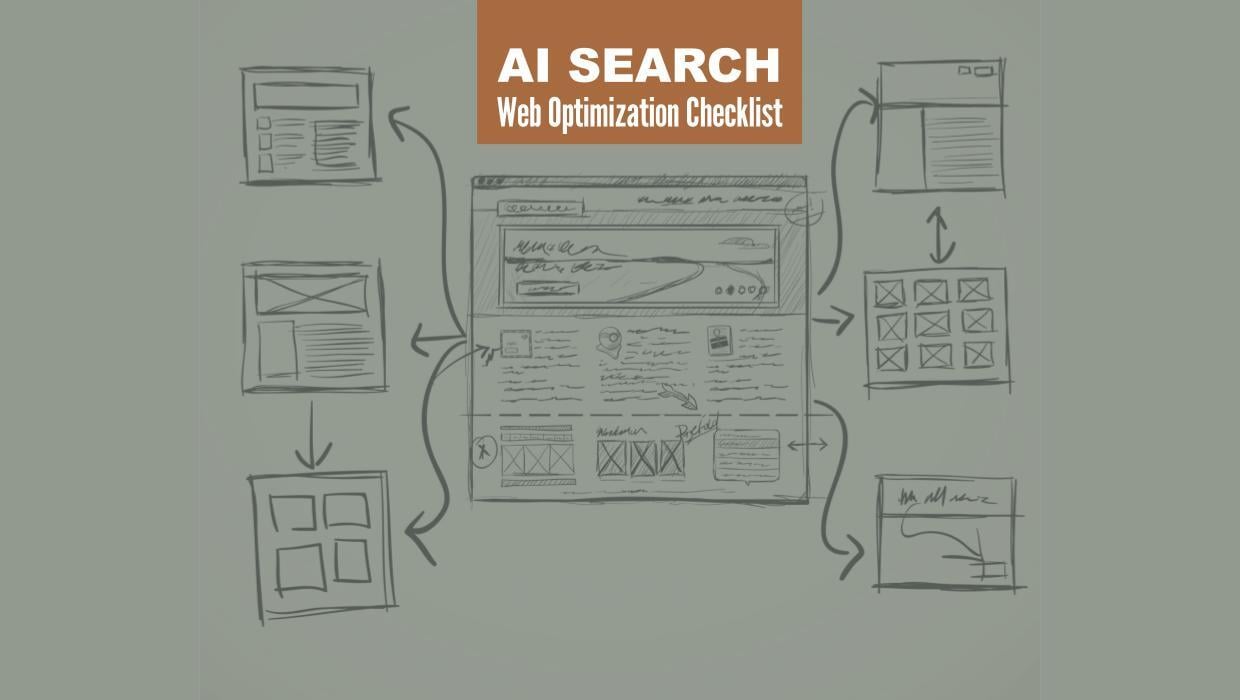How to Increase Blog Traffic With Keyword Optimization
Written by

Stephen King once said, “Sooner or later, everything old is new again.” He wasn’t referring to blogging or keyword optimization, but the principle still applies — and it can get you blockbuster SEO results from content you already have.
Knowing how to increase blog traffic requires a blend of good writing and SEO research skills. Rather than struggling to come up with new, relevant content from scratch every time, use these keyword optimization tips to update existing blogs for quick organic traffic gains.
Why Optimize Old Blog Posts?
With somewhere between 4–7 million blog posts published daily, it’s no wonder your latest article might not gain any traction. Optimizing your old blog posts gives you the best chance of improving performance and attracting qualified leads.
Need more reasons to optimize your blogs?
- Your blogs could perform much better. Traffic, time on page, conversions, bounce rate, and social media shares all demonstrate value, and just a little work can help you increase these metrics.
- Historical optimization works. HubSpot reported that organic search views of old posts more than doubled as a result of blog optimization. Optimizing breathes new ROI into work you’ve already done.
- Optimizing ensures your content is updated and relevant. If you’re committed to inbound marketing principles, then you care about providing value. Updated information delivers on that promise to your visitors.
- It’s easy and probably won’t cost much. This may be the best part. Updates are usually simple, like refreshing stats and links, adding images, working in focus keywords, revising copy for clarity and simplicity, and replacing old calls to action (CTAs).
How Does Optimizing Old Blogs Work?
Here is a real-world keyword optimization example that can give you an idea of how it works.
We partner with a technology provider that has been cranking out weekly blog posts for several years. As a result, they have a solid online content library. Overall, their search results are fairly robust, but we knew they could be better.
We did a deep-dive analysis and researched the current ways search engine algorithms rank content. Then, we assessed their blogging strategy and determined that it made sense to write fewer new posts. Instead, we proposed that they supplement their content calendar with a few optimized blog posts each month.
Using analytics and SEO tools like Semrush and Google Search Console, we:
- Pinpointed target keyword lists that were already driving traffic to our client’s site
- Identified existing blog articles that already ranked for those keywords but could still rank higher
- Prioritized topics and blogs that could use a refresh
- Discovered some articles that resonated with readers in the past but fell off the radar over time
RELATED: Tips for Conducting Keyword Research
Starting with the lowest-hanging fruit, we selected and polished blog articles. Here are some of the steps we took to improve their existing content:
- Updated relevant information and included current statistics
- Incorporated additional related keywords
- Increased overall length to make the post more exhaustive
- Added current internal and external hyperlinks
- Included additional visuals to keep readers interested
Keyword Optimization Results
Consider the data on one blog article that ranked fairly well for the long tail keyword phrase “best file sharing software for business.”
- Organic search traffic increased by 206%
- Total ranked keywords increased by 245%
- Total number of clicks increased by 16%

The results speak for themselves, but how did we get there?
Find the Low-Hanging Fruit
Knowing which content is due for — and worthy of — a refresh isn’t always cut-and-dried, and making the determination requires both art and science.
1. Start by making sure you understand your target audience. Too often, certain industries rely on “insider” terminology rather than words their ideal buyers would typically enter into a search engine. Understanding your ideal customer is the foundation of any successful inbound marketing strategy.
If you want your website to provide relevant answers to your potential customers, then you need to know the questions they’re actually asking. A tool like AnswerThePublic can help.
2. Assess which articles currently drive the most traffic to your blog and whether their monthly search volumes warrant attention and optimization to rank higher. Many tools, including Google Search Console, Semrush, HubSpot, Keywords Everywhere and others, can help. To identify the best optimization opportunities, look for blog posts that:
- Currently rank #4-20 for the desired keyword
- Currently rank lower than a competitor for the desired keyword
- Rank well, but have not captured a featured snippet
- Rank well for a less competitive primary keyword and could stand to target a higher volume, more competitive related keyword
3. Determine the right mix. You may wonder how often blogs should be optimized. There are no hard and fast rules. However, you typically don't want to refresh a post until at least a year has elapsed, unless there's important new information that wasn't available as of the last publish date.
RELATED: How & Why to Monitor Keyword Rankings for Content Marketing Insights
How to Optimize Blog Posts for SEO
Once we knew which articles were worthy of optimizing, we had to update the blog articles in line with our keyword findings. In particular, Semrush is a handy keyword research tool that provides search engine optimization recommendations. Its on-page SEO checker and writing assistant make it easy to identify where to make improvements.
Optimizing can be as simple as copying your blog post into a Google document and installing the Semrush Writing Assistant SEO plugin tool. Once you implement the tool, you can get recommendations and writing tips for your article, such as:
- Recommended additional keywords
- How long your word count should be
- Whether your paragraphs are too long
- Whether your language is too formal or hard to read
- And a host of other writing tips
The tool gamifies the process, showing you how you score in four categories: readability, SEO, originality, and tone of voice.
 Sample of Semrush writing assistant tool score
Sample of Semrush writing assistant tool score
One ranking factor we’ve discovered as we optimize older posts is a need for more depth. Instead of an overview that is 300–500 words, many topics call for a minimum of 800 words. Some recommend 1,500 or more to improve rank in Google and other search engines. That’s because exhaustive, long-form content may be more relevant to the reader and can serve as a one-stop resource.
RELATED: B2B Blogging Checklist: How to Write a Blog Post
Additional Ways to Analyze Blog Content
Once you’ve worked through the blog post using an optimizing tool, ask yourself some additional questions:
- Is the on-page SEO as strong as it can be? Consider simple details other than keyword data that you may have overlooked when you initially published the content, such as including graphics, anchor text, or other ways to engage readers.
- Do you need to improve the meta description, HTML code, title tags, and/or alt text? On-page SEO is in your control and can make a difference in your SERP position and click-through rate.
- Is the blog linked to and from other related content on your site? Using internal linking between topic clusters and pillar pages creates a directory of sorts for readers. It can strengthen your authority on the topic and may keep visitors on your site longer.
- Does the post need higher quality backlinks to boost page authority and score better for keyword difficulty? When other trustworthy websites backlink to your content, it earns more authority, and Google will reward you for it.
Don’t just take our word for it — give these blog optimization tips a try, and test the results for yourself. Plus, check out our handy SEO Survival Guide for even more in-depth information on how to optimize your content.
Subscribe To Our Blog
Information. Insights. Ideas. Get notified every time a new Weidert Group blog article is published – subscribe now!
You May Also Like...

Search Engine Optimization
Optimize Your Industrial Website for AI Search

Marketing Technology
Why Unified Data Efforts Fail (and How Manufacturers Can Fix It)

Search Engine Optimization
How Falcon Rebuilt Industrial AI Search Visibility in 2025
Accelerate Your Growth with
Weidert Group
If you’re ready to explore a partnership, request a personalized consultation with our team.

